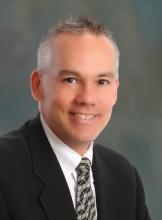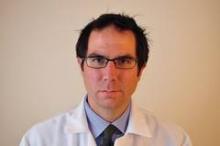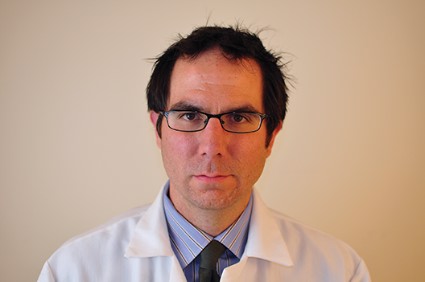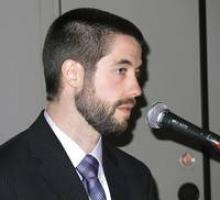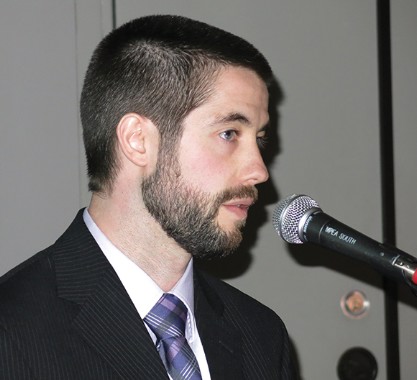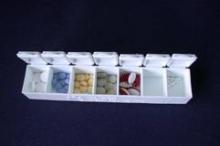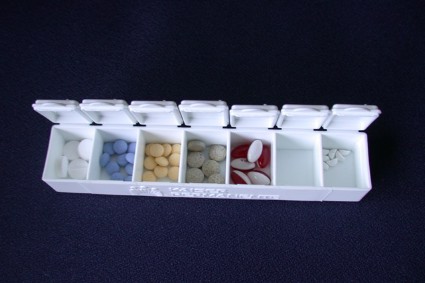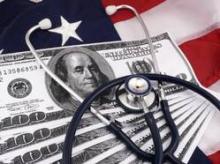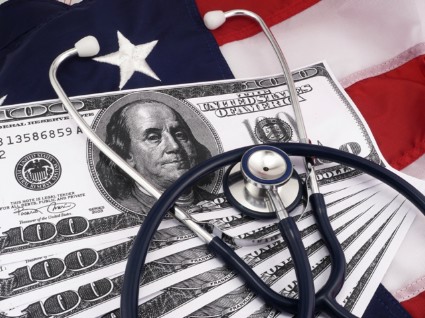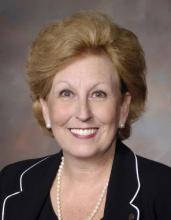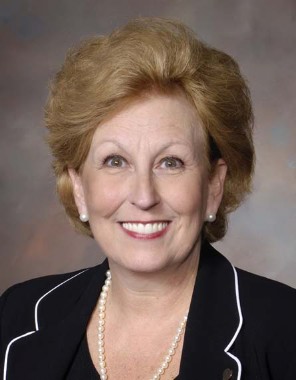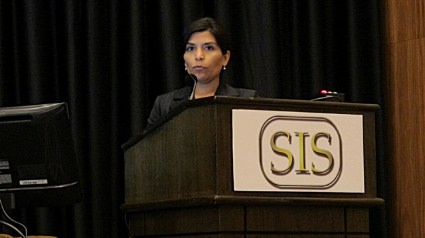User login
Official Newspaper of the American College of Surgeons
Taking precautions can protect physicians from ID theft
When it comes to ID theft, "someone out there is going after doctors," according to Rafal Subernat, D.O.
"And we’ve done nothing wrong," added Dr. Subernat, an anesthesiologist in Bangor, Maine, whose identity was stolen this year at tax time.
Dr. Subernat and his wife thought it was peculiar when earlier this year they attempted to file their taxes electronically and the return was inexplicably rejected.
They subsequently filed by paper. But 2 weeks later, a debit-like card that Dr. Subernat had never ordered arrived in the mail. When he called the issuer, an operator explained the prepaid tax refund card was opened in Dr. Subernat’s name, and that its original $10,000 balance was now at $10.
"It was already too late at that point, because the money was gone," said Dr. Subernat, who discovered his Social Security number had been used to file a fraudulent tax return. "Emotionally, now you’re worried, where is my information? Where is my Social Security number? Is it going to happen next year again?"
Dr. Subernat’s story is mirrored by hundreds of physicians across the country who have become victims of tax fraud this year. Medical providers in 49 states and the District of Columbia have reported identity theft in 2014, including at least 50 physicians in Maine, 135 in Indiana, 192 in New Hampshire, 100 in Connecticut, 34 in Vermont, and 100 in North Carolina, according to estimated numbers provided by state medical associations. The widespread physician ID theft has led to a collaborative investigation by the IRS, the Federal Bureau of Investigation, and the Secret Service. At this article’s deadline, the source of the multistate ID theft had not been identified.
"What is happening is very concerning," said Scott G. Colby, executive vice president for the New Hampshire Medical Society. "We had a handful of people report this happened to them last year, but this year, it’s a significant amount. We’ve never before heard about this" scope of physician ID theft.
Like Dr. Subernat, most physicians learn of the fraud when their tax returns are rejected. In some cases, debit cards are issued in the doctor’s name or bank accounts are fraudulently opened to obtain tax returns. One of the most troubling aspects of the theft is the potential for the stolen personal information to be used for further fraud such as medical identity theft, said Matthew Katz, CEO of the Connecticut State Medical Society.
"When you have a physician’s Social Security number, name and address, you could potentially do other damaging things related to their identity and their medical practice," Mr. Katz said. "Physicians have concerns that [their] information could be used in some way to falsify claim submissions to the government or even worse, trying to procure medications inappropriately."
Dr. Subernat recommended that all physicians check the IRS website and review their transcripts to learn if they have been a fraud victim (www.irs.gov/Individuals/Get-Transcript). Physicians should also keep their eye out for any unusual amount of credit card offers in the mail, Mr. Katz said. A higher frequency of bank card offers and mailings could be a sign that someone is using their identity, he said.
Physicians are also reporting calls from unknown individuals who purport to be from the IRS and want them to disclose personal information so they can "check" if they are a fraud victim. The callers are believed to be piggybacking on the initial fraud crime in an attempt to fool more victims.
"We’ve cautioned our physicians not to provide information to anyone they do not know," Mr. Katz said. "Physicians should remain vigilant and cautious."
If doctors believe their identity has been stolen, the IRS encourages them to immediately report the identity theft to the agency, along with local police and the Federal Trade Commission (www.irs.gov/uac/Newsroom/Tips-for-Taxpayers,-Victims-about-Identity-Theft-and-Tax-Returns). Physicians should also contact credit reporting companies and place a 90-day fraud alert on their credit report, Mr. Colby said. The hold makes it more difficult for thieves to open accounts in the victim’s name (www.consumer.ftc.gov/articles/0275-place-fraud-alert).
Dr. Subernat was provided a secure IRS PIN for future tax return filings. He noted that physicians who believe they are ID theft victims or those who want to prevent the occurrence can contact the IRS about receiving a PIN (www.irs.gov/uac/Get-An-Identity-Protection-PIN).
As for identifying and preventing medical identity theft, physicians should make an effort to review their insurance billings and enrollment records, said Dr. Shantanu Agrawal, deputy administrator and director for the Centers for Medicare & Medicaid Services Center for Program Integrity (CPI). Medical ID theft occurs when a doctor’s personal information is stolen to obtain medical care, buy drugs, or submit fake billings to Medicare (https://oig.hhs.gov/fraud/medical-id-theft/). Doctors can request a copy of their billings from insurers as well as review their Medicare enrollment information, Dr. Agrawal said.
"Ask for your billings and make sure nothing is in your name that you didn’t bill," he said. "With Medicare, we have a system that tracks all of the enrollment information. Physicians can access this information any time to make sure enrollment information is true."
Safeguarding all personal information and being cognizant of any inappropriate activity is critical to avoiding ID theft, Dr. Agrawal said.
"It’s very good for physicians to be focused on prevention and to be aware of these issues," he said.
When it comes to ID theft, "someone out there is going after doctors," according to Rafal Subernat, D.O.
"And we’ve done nothing wrong," added Dr. Subernat, an anesthesiologist in Bangor, Maine, whose identity was stolen this year at tax time.
Dr. Subernat and his wife thought it was peculiar when earlier this year they attempted to file their taxes electronically and the return was inexplicably rejected.
They subsequently filed by paper. But 2 weeks later, a debit-like card that Dr. Subernat had never ordered arrived in the mail. When he called the issuer, an operator explained the prepaid tax refund card was opened in Dr. Subernat’s name, and that its original $10,000 balance was now at $10.
"It was already too late at that point, because the money was gone," said Dr. Subernat, who discovered his Social Security number had been used to file a fraudulent tax return. "Emotionally, now you’re worried, where is my information? Where is my Social Security number? Is it going to happen next year again?"
Dr. Subernat’s story is mirrored by hundreds of physicians across the country who have become victims of tax fraud this year. Medical providers in 49 states and the District of Columbia have reported identity theft in 2014, including at least 50 physicians in Maine, 135 in Indiana, 192 in New Hampshire, 100 in Connecticut, 34 in Vermont, and 100 in North Carolina, according to estimated numbers provided by state medical associations. The widespread physician ID theft has led to a collaborative investigation by the IRS, the Federal Bureau of Investigation, and the Secret Service. At this article’s deadline, the source of the multistate ID theft had not been identified.
"What is happening is very concerning," said Scott G. Colby, executive vice president for the New Hampshire Medical Society. "We had a handful of people report this happened to them last year, but this year, it’s a significant amount. We’ve never before heard about this" scope of physician ID theft.
Like Dr. Subernat, most physicians learn of the fraud when their tax returns are rejected. In some cases, debit cards are issued in the doctor’s name or bank accounts are fraudulently opened to obtain tax returns. One of the most troubling aspects of the theft is the potential for the stolen personal information to be used for further fraud such as medical identity theft, said Matthew Katz, CEO of the Connecticut State Medical Society.
"When you have a physician’s Social Security number, name and address, you could potentially do other damaging things related to their identity and their medical practice," Mr. Katz said. "Physicians have concerns that [their] information could be used in some way to falsify claim submissions to the government or even worse, trying to procure medications inappropriately."
Dr. Subernat recommended that all physicians check the IRS website and review their transcripts to learn if they have been a fraud victim (www.irs.gov/Individuals/Get-Transcript). Physicians should also keep their eye out for any unusual amount of credit card offers in the mail, Mr. Katz said. A higher frequency of bank card offers and mailings could be a sign that someone is using their identity, he said.
Physicians are also reporting calls from unknown individuals who purport to be from the IRS and want them to disclose personal information so they can "check" if they are a fraud victim. The callers are believed to be piggybacking on the initial fraud crime in an attempt to fool more victims.
"We’ve cautioned our physicians not to provide information to anyone they do not know," Mr. Katz said. "Physicians should remain vigilant and cautious."
If doctors believe their identity has been stolen, the IRS encourages them to immediately report the identity theft to the agency, along with local police and the Federal Trade Commission (www.irs.gov/uac/Newsroom/Tips-for-Taxpayers,-Victims-about-Identity-Theft-and-Tax-Returns). Physicians should also contact credit reporting companies and place a 90-day fraud alert on their credit report, Mr. Colby said. The hold makes it more difficult for thieves to open accounts in the victim’s name (www.consumer.ftc.gov/articles/0275-place-fraud-alert).
Dr. Subernat was provided a secure IRS PIN for future tax return filings. He noted that physicians who believe they are ID theft victims or those who want to prevent the occurrence can contact the IRS about receiving a PIN (www.irs.gov/uac/Get-An-Identity-Protection-PIN).
As for identifying and preventing medical identity theft, physicians should make an effort to review their insurance billings and enrollment records, said Dr. Shantanu Agrawal, deputy administrator and director for the Centers for Medicare & Medicaid Services Center for Program Integrity (CPI). Medical ID theft occurs when a doctor’s personal information is stolen to obtain medical care, buy drugs, or submit fake billings to Medicare (https://oig.hhs.gov/fraud/medical-id-theft/). Doctors can request a copy of their billings from insurers as well as review their Medicare enrollment information, Dr. Agrawal said.
"Ask for your billings and make sure nothing is in your name that you didn’t bill," he said. "With Medicare, we have a system that tracks all of the enrollment information. Physicians can access this information any time to make sure enrollment information is true."
Safeguarding all personal information and being cognizant of any inappropriate activity is critical to avoiding ID theft, Dr. Agrawal said.
"It’s very good for physicians to be focused on prevention and to be aware of these issues," he said.
When it comes to ID theft, "someone out there is going after doctors," according to Rafal Subernat, D.O.
"And we’ve done nothing wrong," added Dr. Subernat, an anesthesiologist in Bangor, Maine, whose identity was stolen this year at tax time.
Dr. Subernat and his wife thought it was peculiar when earlier this year they attempted to file their taxes electronically and the return was inexplicably rejected.
They subsequently filed by paper. But 2 weeks later, a debit-like card that Dr. Subernat had never ordered arrived in the mail. When he called the issuer, an operator explained the prepaid tax refund card was opened in Dr. Subernat’s name, and that its original $10,000 balance was now at $10.
"It was already too late at that point, because the money was gone," said Dr. Subernat, who discovered his Social Security number had been used to file a fraudulent tax return. "Emotionally, now you’re worried, where is my information? Where is my Social Security number? Is it going to happen next year again?"
Dr. Subernat’s story is mirrored by hundreds of physicians across the country who have become victims of tax fraud this year. Medical providers in 49 states and the District of Columbia have reported identity theft in 2014, including at least 50 physicians in Maine, 135 in Indiana, 192 in New Hampshire, 100 in Connecticut, 34 in Vermont, and 100 in North Carolina, according to estimated numbers provided by state medical associations. The widespread physician ID theft has led to a collaborative investigation by the IRS, the Federal Bureau of Investigation, and the Secret Service. At this article’s deadline, the source of the multistate ID theft had not been identified.
"What is happening is very concerning," said Scott G. Colby, executive vice president for the New Hampshire Medical Society. "We had a handful of people report this happened to them last year, but this year, it’s a significant amount. We’ve never before heard about this" scope of physician ID theft.
Like Dr. Subernat, most physicians learn of the fraud when their tax returns are rejected. In some cases, debit cards are issued in the doctor’s name or bank accounts are fraudulently opened to obtain tax returns. One of the most troubling aspects of the theft is the potential for the stolen personal information to be used for further fraud such as medical identity theft, said Matthew Katz, CEO of the Connecticut State Medical Society.
"When you have a physician’s Social Security number, name and address, you could potentially do other damaging things related to their identity and their medical practice," Mr. Katz said. "Physicians have concerns that [their] information could be used in some way to falsify claim submissions to the government or even worse, trying to procure medications inappropriately."
Dr. Subernat recommended that all physicians check the IRS website and review their transcripts to learn if they have been a fraud victim (www.irs.gov/Individuals/Get-Transcript). Physicians should also keep their eye out for any unusual amount of credit card offers in the mail, Mr. Katz said. A higher frequency of bank card offers and mailings could be a sign that someone is using their identity, he said.
Physicians are also reporting calls from unknown individuals who purport to be from the IRS and want them to disclose personal information so they can "check" if they are a fraud victim. The callers are believed to be piggybacking on the initial fraud crime in an attempt to fool more victims.
"We’ve cautioned our physicians not to provide information to anyone they do not know," Mr. Katz said. "Physicians should remain vigilant and cautious."
If doctors believe their identity has been stolen, the IRS encourages them to immediately report the identity theft to the agency, along with local police and the Federal Trade Commission (www.irs.gov/uac/Newsroom/Tips-for-Taxpayers,-Victims-about-Identity-Theft-and-Tax-Returns). Physicians should also contact credit reporting companies and place a 90-day fraud alert on their credit report, Mr. Colby said. The hold makes it more difficult for thieves to open accounts in the victim’s name (www.consumer.ftc.gov/articles/0275-place-fraud-alert).
Dr. Subernat was provided a secure IRS PIN for future tax return filings. He noted that physicians who believe they are ID theft victims or those who want to prevent the occurrence can contact the IRS about receiving a PIN (www.irs.gov/uac/Get-An-Identity-Protection-PIN).
As for identifying and preventing medical identity theft, physicians should make an effort to review their insurance billings and enrollment records, said Dr. Shantanu Agrawal, deputy administrator and director for the Centers for Medicare & Medicaid Services Center for Program Integrity (CPI). Medical ID theft occurs when a doctor’s personal information is stolen to obtain medical care, buy drugs, or submit fake billings to Medicare (https://oig.hhs.gov/fraud/medical-id-theft/). Doctors can request a copy of their billings from insurers as well as review their Medicare enrollment information, Dr. Agrawal said.
"Ask for your billings and make sure nothing is in your name that you didn’t bill," he said. "With Medicare, we have a system that tracks all of the enrollment information. Physicians can access this information any time to make sure enrollment information is true."
Safeguarding all personal information and being cognizant of any inappropriate activity is critical to avoiding ID theft, Dr. Agrawal said.
"It’s very good for physicians to be focused on prevention and to be aware of these issues," he said.
Traditional scoring tool limps as VAP screen in surgical ICU study
BALTIMORE – Screening based on a new chest x-ray infiltrate or fever correctly identified more cases of microbiologically confirmed cases of ventilator-associated pneumonia than a traditional screening tool, in a study of patients in a surgical intensive care unit reported at the annual meeting of the Surgical Infection Society.
In the study, the Clinical Pulmonary Infection Score (CPIS) clinical score (using the threshold of 6) would have missed almost 80% of the cases of microbiologically confirmed VAP. The finding of a new chest x-ray infiltrate was highly sensitive for diagnosing VAP, identifying most cases of VAP, followed by fever as the next most sensitive variable. Each had a sensitivity of about 90%, said Dr. Fredric Pieracci of the department of surgery, Denver Health Medical Center, University of Colorado.
Another notable finding of the study was that the presence of organisms on gram stain in the early VAP window (within 5 days of intubation) was highly sensitive for diagnosing VAP, he added.
VAP is the most common nosocomial infection in intubated, critically ill surgical patients and is the most common reason antibiotics are prescribed in the surgical intensive care unit (SICU), he said. Screening criteria for VAP vary widely, but every algorithm includes some variation of the CPIS, with a score that ranges from 0 to 12. Although the CPIS screening tool, which uses variables that include tracheal secretions and chest x-ray results, has come under scrutiny, it is commonly used, with a result over 6 used as the threshold for both obtaining a lower respiratory tract culture and initiating empiric treatment.
The study analyzed the results of 1,013 bronchoalveolar lavage cultures from 497 SICU patients aged 18-88 years, over a 3-year period (2009-2012). Most of the patients (81%) were males and 71% were trauma patients; cultures were obtained a median of 8 days after intubation (range, 1-109 days), and patients had a median of two cultures. VAP was defined microbiologically as at least 105 CFU/mL if no antibiotics had been given within the previous 72 hours; or at least 104 CFU/mL if antibiotics had been given within the previous 72 hours. CPIS scores were calculated retrospectively.
Of the 1,013 cultures, 438 (43%) met the VAP criteria, and 310 of the 497 patients (62%) had at least one episode of VAP.
Most of the CPIS clinical scores were 4, 5, or 6. When the likelihood of VAP was analyzed, CPIS clinical scores from 1 to 9 all correlated with about a 40% chance of VAP, Dr. Pieracci said. The median CPIS clinical score was 5 for those diagnosed with VAP as well as those not diagnosed with VAP, based on the microbiologic criteria.
The sensitivity of the CPIS clinical score, when the threshold of greater than 6 was used, was only 21%, so by using the CPIS, "we would have missed almost 80% of the VAP cases in this group of patients," he pointed out.
Every case of VAP had at least one of the following: fever, a new chest x-ray infiltrate, or the presence of organisms on gram stain.
Of the individual components of the CPIS, the most sensitive for diagnosing VAP were the new finding on chest x-ray (a sensitivity of 91.1%), and fever (a sensitivity of 89.0%).
When the gram stain results were added to the CPIS clinical score, there was a marginal improvement in sensitivity, "but it was still a very poor screening tool," he said. However, the presence of organisms on the gram stain "was highly sensitive for diagnosing VAP, with a reasonably high negative predictive value" in the early VAP window, when cultures were sent within 5 days of intubation, he said.
The results indicate that the CPIS clinical score in the study "had poor discriminative ability for diagnosing VAP in all the clinical scenarios we tested," and it had a sensitivity that was acceptable only at a threshold lower than 6, Dr. Pieracci said. "Based on these data, we recommend abandoning the CPIS clinical score as a screening tool for VAP," and instead, adopting the three criteria and withholding antibiotic therapy in patients with no organisms on gram stain in the early VAP window.
"What we’ve adopted and are now studying is a screening algorithm that differentiates between the early and late period, and is based on either fever or new chest x-ray finding," Dr. Pieracci said. If the gram stain is negative in the early VAP window, then withholding empiric antibiotics is recommended; this is the only scenario identified in which empiric antibiotics could be safely withheld, he added.
The study was funded through institutional monies. Dr. Pieracci had no relevant disclosures.
BALTIMORE – Screening based on a new chest x-ray infiltrate or fever correctly identified more cases of microbiologically confirmed cases of ventilator-associated pneumonia than a traditional screening tool, in a study of patients in a surgical intensive care unit reported at the annual meeting of the Surgical Infection Society.
In the study, the Clinical Pulmonary Infection Score (CPIS) clinical score (using the threshold of 6) would have missed almost 80% of the cases of microbiologically confirmed VAP. The finding of a new chest x-ray infiltrate was highly sensitive for diagnosing VAP, identifying most cases of VAP, followed by fever as the next most sensitive variable. Each had a sensitivity of about 90%, said Dr. Fredric Pieracci of the department of surgery, Denver Health Medical Center, University of Colorado.
Another notable finding of the study was that the presence of organisms on gram stain in the early VAP window (within 5 days of intubation) was highly sensitive for diagnosing VAP, he added.
VAP is the most common nosocomial infection in intubated, critically ill surgical patients and is the most common reason antibiotics are prescribed in the surgical intensive care unit (SICU), he said. Screening criteria for VAP vary widely, but every algorithm includes some variation of the CPIS, with a score that ranges from 0 to 12. Although the CPIS screening tool, which uses variables that include tracheal secretions and chest x-ray results, has come under scrutiny, it is commonly used, with a result over 6 used as the threshold for both obtaining a lower respiratory tract culture and initiating empiric treatment.
The study analyzed the results of 1,013 bronchoalveolar lavage cultures from 497 SICU patients aged 18-88 years, over a 3-year period (2009-2012). Most of the patients (81%) were males and 71% were trauma patients; cultures were obtained a median of 8 days after intubation (range, 1-109 days), and patients had a median of two cultures. VAP was defined microbiologically as at least 105 CFU/mL if no antibiotics had been given within the previous 72 hours; or at least 104 CFU/mL if antibiotics had been given within the previous 72 hours. CPIS scores were calculated retrospectively.
Of the 1,013 cultures, 438 (43%) met the VAP criteria, and 310 of the 497 patients (62%) had at least one episode of VAP.
Most of the CPIS clinical scores were 4, 5, or 6. When the likelihood of VAP was analyzed, CPIS clinical scores from 1 to 9 all correlated with about a 40% chance of VAP, Dr. Pieracci said. The median CPIS clinical score was 5 for those diagnosed with VAP as well as those not diagnosed with VAP, based on the microbiologic criteria.
The sensitivity of the CPIS clinical score, when the threshold of greater than 6 was used, was only 21%, so by using the CPIS, "we would have missed almost 80% of the VAP cases in this group of patients," he pointed out.
Every case of VAP had at least one of the following: fever, a new chest x-ray infiltrate, or the presence of organisms on gram stain.
Of the individual components of the CPIS, the most sensitive for diagnosing VAP were the new finding on chest x-ray (a sensitivity of 91.1%), and fever (a sensitivity of 89.0%).
When the gram stain results were added to the CPIS clinical score, there was a marginal improvement in sensitivity, "but it was still a very poor screening tool," he said. However, the presence of organisms on the gram stain "was highly sensitive for diagnosing VAP, with a reasonably high negative predictive value" in the early VAP window, when cultures were sent within 5 days of intubation, he said.
The results indicate that the CPIS clinical score in the study "had poor discriminative ability for diagnosing VAP in all the clinical scenarios we tested," and it had a sensitivity that was acceptable only at a threshold lower than 6, Dr. Pieracci said. "Based on these data, we recommend abandoning the CPIS clinical score as a screening tool for VAP," and instead, adopting the three criteria and withholding antibiotic therapy in patients with no organisms on gram stain in the early VAP window.
"What we’ve adopted and are now studying is a screening algorithm that differentiates between the early and late period, and is based on either fever or new chest x-ray finding," Dr. Pieracci said. If the gram stain is negative in the early VAP window, then withholding empiric antibiotics is recommended; this is the only scenario identified in which empiric antibiotics could be safely withheld, he added.
The study was funded through institutional monies. Dr. Pieracci had no relevant disclosures.
BALTIMORE – Screening based on a new chest x-ray infiltrate or fever correctly identified more cases of microbiologically confirmed cases of ventilator-associated pneumonia than a traditional screening tool, in a study of patients in a surgical intensive care unit reported at the annual meeting of the Surgical Infection Society.
In the study, the Clinical Pulmonary Infection Score (CPIS) clinical score (using the threshold of 6) would have missed almost 80% of the cases of microbiologically confirmed VAP. The finding of a new chest x-ray infiltrate was highly sensitive for diagnosing VAP, identifying most cases of VAP, followed by fever as the next most sensitive variable. Each had a sensitivity of about 90%, said Dr. Fredric Pieracci of the department of surgery, Denver Health Medical Center, University of Colorado.
Another notable finding of the study was that the presence of organisms on gram stain in the early VAP window (within 5 days of intubation) was highly sensitive for diagnosing VAP, he added.
VAP is the most common nosocomial infection in intubated, critically ill surgical patients and is the most common reason antibiotics are prescribed in the surgical intensive care unit (SICU), he said. Screening criteria for VAP vary widely, but every algorithm includes some variation of the CPIS, with a score that ranges from 0 to 12. Although the CPIS screening tool, which uses variables that include tracheal secretions and chest x-ray results, has come under scrutiny, it is commonly used, with a result over 6 used as the threshold for both obtaining a lower respiratory tract culture and initiating empiric treatment.
The study analyzed the results of 1,013 bronchoalveolar lavage cultures from 497 SICU patients aged 18-88 years, over a 3-year period (2009-2012). Most of the patients (81%) were males and 71% were trauma patients; cultures were obtained a median of 8 days after intubation (range, 1-109 days), and patients had a median of two cultures. VAP was defined microbiologically as at least 105 CFU/mL if no antibiotics had been given within the previous 72 hours; or at least 104 CFU/mL if antibiotics had been given within the previous 72 hours. CPIS scores were calculated retrospectively.
Of the 1,013 cultures, 438 (43%) met the VAP criteria, and 310 of the 497 patients (62%) had at least one episode of VAP.
Most of the CPIS clinical scores were 4, 5, or 6. When the likelihood of VAP was analyzed, CPIS clinical scores from 1 to 9 all correlated with about a 40% chance of VAP, Dr. Pieracci said. The median CPIS clinical score was 5 for those diagnosed with VAP as well as those not diagnosed with VAP, based on the microbiologic criteria.
The sensitivity of the CPIS clinical score, when the threshold of greater than 6 was used, was only 21%, so by using the CPIS, "we would have missed almost 80% of the VAP cases in this group of patients," he pointed out.
Every case of VAP had at least one of the following: fever, a new chest x-ray infiltrate, or the presence of organisms on gram stain.
Of the individual components of the CPIS, the most sensitive for diagnosing VAP were the new finding on chest x-ray (a sensitivity of 91.1%), and fever (a sensitivity of 89.0%).
When the gram stain results were added to the CPIS clinical score, there was a marginal improvement in sensitivity, "but it was still a very poor screening tool," he said. However, the presence of organisms on the gram stain "was highly sensitive for diagnosing VAP, with a reasonably high negative predictive value" in the early VAP window, when cultures were sent within 5 days of intubation, he said.
The results indicate that the CPIS clinical score in the study "had poor discriminative ability for diagnosing VAP in all the clinical scenarios we tested," and it had a sensitivity that was acceptable only at a threshold lower than 6, Dr. Pieracci said. "Based on these data, we recommend abandoning the CPIS clinical score as a screening tool for VAP," and instead, adopting the three criteria and withholding antibiotic therapy in patients with no organisms on gram stain in the early VAP window.
"What we’ve adopted and are now studying is a screening algorithm that differentiates between the early and late period, and is based on either fever or new chest x-ray finding," Dr. Pieracci said. If the gram stain is negative in the early VAP window, then withholding empiric antibiotics is recommended; this is the only scenario identified in which empiric antibiotics could be safely withheld, he added.
The study was funded through institutional monies. Dr. Pieracci had no relevant disclosures.
AT THE SIS ANNUAL MEETING
Key clinical point: The Clinical Pulmonary Infection Score (CPIS) was less useful than other variables, such as a new chest x-ray infiltrate or fever, in screening surgical ICU patients for VAP and determining the need for empiric antibiotic therapy.
Major finding: The sensitivity of the CPIS tool for VAP in surgical ICU patients was only 21%, compared with 91.1% for a new chest x-ray infiltrate and 89.0% for fever.
Data source: The study evaluated the value of the CPIS and other clinical and gram stain variables in screening for VAP, in 497 adult patients in a surgical ICU.
Disclosures: Dr. Pieracci had no relevant disclosures. The study was funded through institutional monies.
Tests may help before liver transplant, not after
CHICAGO – Two laboratory measurements that are commonly used to assess the cause of symptomatic ascites before liver transplant may be deceptive when used to assess posttransplant ascites, a retrospective study of 15 patients suggested.
Before liver transplant, a serum-ascites albumin gradient (SAAG) greater than 1.1 g/dL differentiates ascites due to portal hypertension rather than other causes 97% of the time. An ascites total protein (aTP) measurement has a lower accuracy for portal hypertension of 57%, but when used in conjunction with SAAG, an aTP of 2.5 g/dL or greater suggests that the cause is cardiac ascites, tuberculous ascites, or peritoneal carcinomatosis, Dr. Jeffrey LaFond explained at the annual Digestive Disease Week.
He and his associates studied the records of 15 patients who developed symptomatic post-transplant ascites that had enough volume to require therapeutic paracentesis. The ascites occurred a mean of 515 days after transplantation (ranging from 14 to 2,744 days). In the work-up for ascites, the sensitivity of SAAG for portal hypertension was 82% and the sensitivity of aTP for portal hypertension was 50%.
Three of 12 patients who had a posttransplant SAAG had a gradient below 1.1 g/dL even though other tests found no evidence of another cause for ascites besides portal hypertension, and two of those three patients had confirmed portal hypertension, he reported. Five of 10 patients with an aTP had a value greater than 2.5 g/dL, even though they had confirmed portal hypertension and normal cardiac function, he reported.
"Assessment of ascites due to portal hypertension and/or vascular stricture in the posttransplant period using SAAG and aTP can be deceiving and cannot be relied upon to make diagnostic interventional decisions," said Dr. LaFond of the University of Virginia, Charlottesville. "A hepatic venogram should be performed early on in patients with posttransplant ascites to evaluate for strictures and portal hypertension.
Records showed that all patients in the study had ascites confirmed by imaging and/or paracenteses and had diagnostic studies to rule out heart failure, opportunistic infection, or malignancy as the source of ascites. Suspected portal hypertension was confirmed by pressure measurements or the presence of vascular strictures on venogram, with portal hypertension defined as a sinusoidal or portosystemic gradient greater than 5 or the presence of a stricture with a gradient of at least 3.
An estimated 3%-7% of patients develop ascites after liver transplant, which has been associated with an increased risk of renal impairment, prolonged hospitalization, and abdominal infections, he said.
Dr. LaFond reported having no financial disclosures.
On Twitter @sherryboschert
*This story was updated 6/3/2014.
CHICAGO – Two laboratory measurements that are commonly used to assess the cause of symptomatic ascites before liver transplant may be deceptive when used to assess posttransplant ascites, a retrospective study of 15 patients suggested.
Before liver transplant, a serum-ascites albumin gradient (SAAG) greater than 1.1 g/dL differentiates ascites due to portal hypertension rather than other causes 97% of the time. An ascites total protein (aTP) measurement has a lower accuracy for portal hypertension of 57%, but when used in conjunction with SAAG, an aTP of 2.5 g/dL or greater suggests that the cause is cardiac ascites, tuberculous ascites, or peritoneal carcinomatosis, Dr. Jeffrey LaFond explained at the annual Digestive Disease Week.
He and his associates studied the records of 15 patients who developed symptomatic post-transplant ascites that had enough volume to require therapeutic paracentesis. The ascites occurred a mean of 515 days after transplantation (ranging from 14 to 2,744 days). In the work-up for ascites, the sensitivity of SAAG for portal hypertension was 82% and the sensitivity of aTP for portal hypertension was 50%.
Three of 12 patients who had a posttransplant SAAG had a gradient below 1.1 g/dL even though other tests found no evidence of another cause for ascites besides portal hypertension, and two of those three patients had confirmed portal hypertension, he reported. Five of 10 patients with an aTP had a value greater than 2.5 g/dL, even though they had confirmed portal hypertension and normal cardiac function, he reported.
"Assessment of ascites due to portal hypertension and/or vascular stricture in the posttransplant period using SAAG and aTP can be deceiving and cannot be relied upon to make diagnostic interventional decisions," said Dr. LaFond of the University of Virginia, Charlottesville. "A hepatic venogram should be performed early on in patients with posttransplant ascites to evaluate for strictures and portal hypertension.
Records showed that all patients in the study had ascites confirmed by imaging and/or paracenteses and had diagnostic studies to rule out heart failure, opportunistic infection, or malignancy as the source of ascites. Suspected portal hypertension was confirmed by pressure measurements or the presence of vascular strictures on venogram, with portal hypertension defined as a sinusoidal or portosystemic gradient greater than 5 or the presence of a stricture with a gradient of at least 3.
An estimated 3%-7% of patients develop ascites after liver transplant, which has been associated with an increased risk of renal impairment, prolonged hospitalization, and abdominal infections, he said.
Dr. LaFond reported having no financial disclosures.
On Twitter @sherryboschert
*This story was updated 6/3/2014.
CHICAGO – Two laboratory measurements that are commonly used to assess the cause of symptomatic ascites before liver transplant may be deceptive when used to assess posttransplant ascites, a retrospective study of 15 patients suggested.
Before liver transplant, a serum-ascites albumin gradient (SAAG) greater than 1.1 g/dL differentiates ascites due to portal hypertension rather than other causes 97% of the time. An ascites total protein (aTP) measurement has a lower accuracy for portal hypertension of 57%, but when used in conjunction with SAAG, an aTP of 2.5 g/dL or greater suggests that the cause is cardiac ascites, tuberculous ascites, or peritoneal carcinomatosis, Dr. Jeffrey LaFond explained at the annual Digestive Disease Week.
He and his associates studied the records of 15 patients who developed symptomatic post-transplant ascites that had enough volume to require therapeutic paracentesis. The ascites occurred a mean of 515 days after transplantation (ranging from 14 to 2,744 days). In the work-up for ascites, the sensitivity of SAAG for portal hypertension was 82% and the sensitivity of aTP for portal hypertension was 50%.
Three of 12 patients who had a posttransplant SAAG had a gradient below 1.1 g/dL even though other tests found no evidence of another cause for ascites besides portal hypertension, and two of those three patients had confirmed portal hypertension, he reported. Five of 10 patients with an aTP had a value greater than 2.5 g/dL, even though they had confirmed portal hypertension and normal cardiac function, he reported.
"Assessment of ascites due to portal hypertension and/or vascular stricture in the posttransplant period using SAAG and aTP can be deceiving and cannot be relied upon to make diagnostic interventional decisions," said Dr. LaFond of the University of Virginia, Charlottesville. "A hepatic venogram should be performed early on in patients with posttransplant ascites to evaluate for strictures and portal hypertension.
Records showed that all patients in the study had ascites confirmed by imaging and/or paracenteses and had diagnostic studies to rule out heart failure, opportunistic infection, or malignancy as the source of ascites. Suspected portal hypertension was confirmed by pressure measurements or the presence of vascular strictures on venogram, with portal hypertension defined as a sinusoidal or portosystemic gradient greater than 5 or the presence of a stricture with a gradient of at least 3.
An estimated 3%-7% of patients develop ascites after liver transplant, which has been associated with an increased risk of renal impairment, prolonged hospitalization, and abdominal infections, he said.
Dr. LaFond reported having no financial disclosures.
On Twitter @sherryboschert
*This story was updated 6/3/2014.
AT DDW 2014
Key clinical point: Serum-ascites albumin gradient and ascites total protein cannot be relied upon to differentiate the cause of ascites after liver transplant.
Major finding: The sensitivity for portal hypertension as the cause of ascites after liver transplant was 82% for SAAG and 50% for aTP.
Data source: A retrospective study of 15 patients who developed symptomatic ascites after liver transplantation that required intervention.
Disclosures: Dr. LaFond reported having no financial disclosures.
EBA: Reminder app improved multimedication adherence in elderly
A tablet-based app designed for elderly Spaniards taking multiple medications seemed to improve treatment adherence rates but not clinical outcomes in a randomized controlled study of 99 patients.
The 48 patients in the control group received oral and written information on the safe use of their medications in the 3-month single-blind trial. The other 51 patients took home a tablet computer (either an iPad 2 or a BQ Verne) with a medication self-management app that the investigators created and called ALICE. The app incorporated personalized prescriptions and medical advice from patients’ physicians, showed images of each medication and its packaging, provided alerts and multiple reminders to take a medication, and transmitted monitoring information to a caregiver.
The rate of self-reported adherence (measured on the four-item Morisky Medication Adherence Scale) increased by a significant 28% in the app group and did not change significantly in the control group. The rate of missed doses decreased by a significant 27% in the app group and increased slightly in the control group, reported José Joaquin Mira, Ph.D., and his associates (J. Med. Internet. Res. 2014;16:e99).
The rate of medication errors that involved taking the wrong drug or dose did not change significantly in the app group as a whole but decreased significantly by 41% among patients who had reported making two or more medication errors before the study.
Levels of glycated hemoglobin, blood pressure, and self-perceived health status did not change significantly in either the app or control groups. Cholesterol levels increased by 5% in both groups, which was statistically but not clinically significant, reported Dr. Mira of Miguel Hernández University, Elche, Spain.
"Three months may not be long enough to observe differences" in any clinical effects of using the app, he suggested. On the other hand, it’s unknown whether the app would be effective in the long term.
Of the 99 patients, 72 (73%) took more than five types of drugs per day and 36 were under the care of more than one doctor (36%).
Among the 51 patients in the app group, medication adherence rates at the end of the study were better in the 28 patients who had never used a computer, tablet, or smartphone (55%) than in those who had some familiarity with the technology.
The app users received up to 2 hours of instruction on how to use the app and had a phone number to call for technical support. Support was needed by 30 patients (59%), mostly related to charging the tablet’s battery or restarting the system. Mean satisfaction scores for the app were high (8 out of a possible 10) and 88% of users said the app improved their medication use or helped to a certain extent, with 12% saying it did not help.
The investigators designed the app with input from 23 patients, three physicians, and four pharmacists. "This study should change the expectations of developers and mobile phone companies, encouraging them to develop apps and devices suited to older patients with multimorbidity," Dr. Mira wrote.
Clinical trials of apps to improve medication adherence are in their infancy.
Unpublished results from a separate uncontrolled study of PatientPartner, a mobile game app that offers iterative guidance, suggest that medication adherence improved by 37% (from 37% to 58%) among 100 patients with diabetes who had been nonadherent. Adherence to diet recommendations increased by 24%, adherence to exercise recommendations increased by 14%, and hemoglobin A1c levels decreased from 10.7% to 9.7%, the company that makes the app reported in a press release.
Investigators at the University of Arkansas, Fayetteville, evaluated 160 currently-available medication adherence apps for smartphones in a separate study, ranked them by the desirability of their features, and then tested the top 10 using a standard medication regimen. Their top three picks were MyMeds (free), RxmindMe (free), and MyMedSchedule (part of a subscription system from MyMeds.com), reported Lindsey Dayer, Pharm.D., and her associates (J. Am. Pharm. Assoc. 2013;53:172-181). Though these aren’t clinical outcomes, it gives medical and pharmacy care providers some basis for recommending one adherence app over another, the investigators suggested.
Dr. Mira and Dr. Dayer reported having no financial disclosures.
On Twitter @sherryboschert
A tablet-based app designed for elderly Spaniards taking multiple medications seemed to improve treatment adherence rates but not clinical outcomes in a randomized controlled study of 99 patients.
The 48 patients in the control group received oral and written information on the safe use of their medications in the 3-month single-blind trial. The other 51 patients took home a tablet computer (either an iPad 2 or a BQ Verne) with a medication self-management app that the investigators created and called ALICE. The app incorporated personalized prescriptions and medical advice from patients’ physicians, showed images of each medication and its packaging, provided alerts and multiple reminders to take a medication, and transmitted monitoring information to a caregiver.
The rate of self-reported adherence (measured on the four-item Morisky Medication Adherence Scale) increased by a significant 28% in the app group and did not change significantly in the control group. The rate of missed doses decreased by a significant 27% in the app group and increased slightly in the control group, reported José Joaquin Mira, Ph.D., and his associates (J. Med. Internet. Res. 2014;16:e99).
The rate of medication errors that involved taking the wrong drug or dose did not change significantly in the app group as a whole but decreased significantly by 41% among patients who had reported making two or more medication errors before the study.
Levels of glycated hemoglobin, blood pressure, and self-perceived health status did not change significantly in either the app or control groups. Cholesterol levels increased by 5% in both groups, which was statistically but not clinically significant, reported Dr. Mira of Miguel Hernández University, Elche, Spain.
"Three months may not be long enough to observe differences" in any clinical effects of using the app, he suggested. On the other hand, it’s unknown whether the app would be effective in the long term.
Of the 99 patients, 72 (73%) took more than five types of drugs per day and 36 were under the care of more than one doctor (36%).
Among the 51 patients in the app group, medication adherence rates at the end of the study were better in the 28 patients who had never used a computer, tablet, or smartphone (55%) than in those who had some familiarity with the technology.
The app users received up to 2 hours of instruction on how to use the app and had a phone number to call for technical support. Support was needed by 30 patients (59%), mostly related to charging the tablet’s battery or restarting the system. Mean satisfaction scores for the app were high (8 out of a possible 10) and 88% of users said the app improved their medication use or helped to a certain extent, with 12% saying it did not help.
The investigators designed the app with input from 23 patients, three physicians, and four pharmacists. "This study should change the expectations of developers and mobile phone companies, encouraging them to develop apps and devices suited to older patients with multimorbidity," Dr. Mira wrote.
Clinical trials of apps to improve medication adherence are in their infancy.
Unpublished results from a separate uncontrolled study of PatientPartner, a mobile game app that offers iterative guidance, suggest that medication adherence improved by 37% (from 37% to 58%) among 100 patients with diabetes who had been nonadherent. Adherence to diet recommendations increased by 24%, adherence to exercise recommendations increased by 14%, and hemoglobin A1c levels decreased from 10.7% to 9.7%, the company that makes the app reported in a press release.
Investigators at the University of Arkansas, Fayetteville, evaluated 160 currently-available medication adherence apps for smartphones in a separate study, ranked them by the desirability of their features, and then tested the top 10 using a standard medication regimen. Their top three picks were MyMeds (free), RxmindMe (free), and MyMedSchedule (part of a subscription system from MyMeds.com), reported Lindsey Dayer, Pharm.D., and her associates (J. Am. Pharm. Assoc. 2013;53:172-181). Though these aren’t clinical outcomes, it gives medical and pharmacy care providers some basis for recommending one adherence app over another, the investigators suggested.
Dr. Mira and Dr. Dayer reported having no financial disclosures.
On Twitter @sherryboschert
A tablet-based app designed for elderly Spaniards taking multiple medications seemed to improve treatment adherence rates but not clinical outcomes in a randomized controlled study of 99 patients.
The 48 patients in the control group received oral and written information on the safe use of their medications in the 3-month single-blind trial. The other 51 patients took home a tablet computer (either an iPad 2 or a BQ Verne) with a medication self-management app that the investigators created and called ALICE. The app incorporated personalized prescriptions and medical advice from patients’ physicians, showed images of each medication and its packaging, provided alerts and multiple reminders to take a medication, and transmitted monitoring information to a caregiver.
The rate of self-reported adherence (measured on the four-item Morisky Medication Adherence Scale) increased by a significant 28% in the app group and did not change significantly in the control group. The rate of missed doses decreased by a significant 27% in the app group and increased slightly in the control group, reported José Joaquin Mira, Ph.D., and his associates (J. Med. Internet. Res. 2014;16:e99).
The rate of medication errors that involved taking the wrong drug or dose did not change significantly in the app group as a whole but decreased significantly by 41% among patients who had reported making two or more medication errors before the study.
Levels of glycated hemoglobin, blood pressure, and self-perceived health status did not change significantly in either the app or control groups. Cholesterol levels increased by 5% in both groups, which was statistically but not clinically significant, reported Dr. Mira of Miguel Hernández University, Elche, Spain.
"Three months may not be long enough to observe differences" in any clinical effects of using the app, he suggested. On the other hand, it’s unknown whether the app would be effective in the long term.
Of the 99 patients, 72 (73%) took more than five types of drugs per day and 36 were under the care of more than one doctor (36%).
Among the 51 patients in the app group, medication adherence rates at the end of the study were better in the 28 patients who had never used a computer, tablet, or smartphone (55%) than in those who had some familiarity with the technology.
The app users received up to 2 hours of instruction on how to use the app and had a phone number to call for technical support. Support was needed by 30 patients (59%), mostly related to charging the tablet’s battery or restarting the system. Mean satisfaction scores for the app were high (8 out of a possible 10) and 88% of users said the app improved their medication use or helped to a certain extent, with 12% saying it did not help.
The investigators designed the app with input from 23 patients, three physicians, and four pharmacists. "This study should change the expectations of developers and mobile phone companies, encouraging them to develop apps and devices suited to older patients with multimorbidity," Dr. Mira wrote.
Clinical trials of apps to improve medication adherence are in their infancy.
Unpublished results from a separate uncontrolled study of PatientPartner, a mobile game app that offers iterative guidance, suggest that medication adherence improved by 37% (from 37% to 58%) among 100 patients with diabetes who had been nonadherent. Adherence to diet recommendations increased by 24%, adherence to exercise recommendations increased by 14%, and hemoglobin A1c levels decreased from 10.7% to 9.7%, the company that makes the app reported in a press release.
Investigators at the University of Arkansas, Fayetteville, evaluated 160 currently-available medication adherence apps for smartphones in a separate study, ranked them by the desirability of their features, and then tested the top 10 using a standard medication regimen. Their top three picks were MyMeds (free), RxmindMe (free), and MyMedSchedule (part of a subscription system from MyMeds.com), reported Lindsey Dayer, Pharm.D., and her associates (J. Am. Pharm. Assoc. 2013;53:172-181). Though these aren’t clinical outcomes, it gives medical and pharmacy care providers some basis for recommending one adherence app over another, the investigators suggested.
Dr. Mira and Dr. Dayer reported having no financial disclosures.
On Twitter @sherryboschert
HHS board rules sex reassignment surgery can be covered by Medicare
Medicare beneficiaries seeking coverage for sexual reassignment surgery will no longer be automatically denied, thanks to a ruling from a federal appeals board.
On May 30, the Department of Health and Human Services departmental appeal board overturned a Medicare national coverage determination issued in 1989 that stated that transsexual surgery for sex reassignment would not be covered by the government because it was "experimental" and had a high rate of serious complications.
The appeals board ruled that the national coverage determination was no longer valid because it was based primarily on outdated scientific information from 1981.
Officials at the Centers for Medicare & Medicaid Services have 30 days to implement the decision. Aaron Albright, director of media relations at the CMS, said Medicare administrative contractors will make coverage decisions on a case by case basis or under a local coverage determination based on clinical evidence.
The decision does not address other treatments, including hormone therapy.
The ACLU, Gay & Lesbian Advocates & Defenders, and National Center for Lesbian Rights filed an administrative challenge to the Medicare national coverage policy in 2013 on behalf of Denee Mallon, a transgender woman who has been seeking surgery for severe gender dysphoria.
The groups praised the decision for removing a "threshold barrier" to medical care for transgender people who are covered by Medicare.
"It is consistent with the consensus of the medical and scientific community that access to gender transition–related care is medically necessary for many people with gender dysphoria," the groups said in a statement. "The removal of the exclusion of coverage for surgical care for Medicare recipients means that individuals will not automatically have claims of coverage for gender transition–related surgeries denied. They should either get coverage, or at a minimum, receive an individualized review of the medical need for the specific procedure they seek, just like anyone seeking coverage for any other medical treatment."
On Twitter @maryellenny
Medicare beneficiaries seeking coverage for sexual reassignment surgery will no longer be automatically denied, thanks to a ruling from a federal appeals board.
On May 30, the Department of Health and Human Services departmental appeal board overturned a Medicare national coverage determination issued in 1989 that stated that transsexual surgery for sex reassignment would not be covered by the government because it was "experimental" and had a high rate of serious complications.
The appeals board ruled that the national coverage determination was no longer valid because it was based primarily on outdated scientific information from 1981.
Officials at the Centers for Medicare & Medicaid Services have 30 days to implement the decision. Aaron Albright, director of media relations at the CMS, said Medicare administrative contractors will make coverage decisions on a case by case basis or under a local coverage determination based on clinical evidence.
The decision does not address other treatments, including hormone therapy.
The ACLU, Gay & Lesbian Advocates & Defenders, and National Center for Lesbian Rights filed an administrative challenge to the Medicare national coverage policy in 2013 on behalf of Denee Mallon, a transgender woman who has been seeking surgery for severe gender dysphoria.
The groups praised the decision for removing a "threshold barrier" to medical care for transgender people who are covered by Medicare.
"It is consistent with the consensus of the medical and scientific community that access to gender transition–related care is medically necessary for many people with gender dysphoria," the groups said in a statement. "The removal of the exclusion of coverage for surgical care for Medicare recipients means that individuals will not automatically have claims of coverage for gender transition–related surgeries denied. They should either get coverage, or at a minimum, receive an individualized review of the medical need for the specific procedure they seek, just like anyone seeking coverage for any other medical treatment."
On Twitter @maryellenny
Medicare beneficiaries seeking coverage for sexual reassignment surgery will no longer be automatically denied, thanks to a ruling from a federal appeals board.
On May 30, the Department of Health and Human Services departmental appeal board overturned a Medicare national coverage determination issued in 1989 that stated that transsexual surgery for sex reassignment would not be covered by the government because it was "experimental" and had a high rate of serious complications.
The appeals board ruled that the national coverage determination was no longer valid because it was based primarily on outdated scientific information from 1981.
Officials at the Centers for Medicare & Medicaid Services have 30 days to implement the decision. Aaron Albright, director of media relations at the CMS, said Medicare administrative contractors will make coverage decisions on a case by case basis or under a local coverage determination based on clinical evidence.
The decision does not address other treatments, including hormone therapy.
The ACLU, Gay & Lesbian Advocates & Defenders, and National Center for Lesbian Rights filed an administrative challenge to the Medicare national coverage policy in 2013 on behalf of Denee Mallon, a transgender woman who has been seeking surgery for severe gender dysphoria.
The groups praised the decision for removing a "threshold barrier" to medical care for transgender people who are covered by Medicare.
"It is consistent with the consensus of the medical and scientific community that access to gender transition–related care is medically necessary for many people with gender dysphoria," the groups said in a statement. "The removal of the exclusion of coverage for surgical care for Medicare recipients means that individuals will not automatically have claims of coverage for gender transition–related surgeries denied. They should either get coverage, or at a minimum, receive an individualized review of the medical need for the specific procedure they seek, just like anyone seeking coverage for any other medical treatment."
On Twitter @maryellenny
Doctors' political giving starts to shift from Republicans
A gradual shift in physicians’ contributions from Republican candidates and organizations – and to their Democratic counterparts – has accompanied the increasing numbers of female physicians and physician employees in the workforce, Adam Bonica, Ph.D., and his colleagues reported June 2 in JAMA Internal Medicine.
The researchers used publicly available data from the Federal Elections Commission and the Database on Ideology, Money in Politics, and Elections for the 1992 and 2012 election cycles. Doctors were identified using the National Provider Identified public use file from the National Plan and Provider Enumeration System and the Unique Physician Identifier Number database (JAMA Intern. Med. [doi:10.1001/jamainternmed.2014.2105]).
A total of 140,423 physicians contributed at least $200 to a candidate or organization (including super political action committees) during at least one election cycle in that time, Dr. Bonica of Stanford (Calif.) University and his colleagues reported.
In the 1992 election cycle (spanning 1991 and 1992), 2.6% of physicians made $20 million in political contributions; by the 2012 cycle, 9.4% of physicians donated $189 million. The authors calculated the percentage of total contributions that went to Republican candidates or organizations during those 2 decades.
During the entire study period, an average 57% of male physicians and 31% of female physicians contributed to Republicans; however, the overall percentage of physician contributions to Republicans began decreasing in 1996. In both the 2008 and 2012 election cycles, less than half of political contributions from physicians went to Republicans.
The gender gap in contributions also increased over time. In the 2012 election cycles, twice as many men (52%) as women (24%) donated to Republicans. The gap was similar between doctors practicing at for-profit (53%) versus nonprofit (26%) organizations.
The biggest contrast in contributions was by specialty and also showed increased polarization during the study period. Although 66% of surgeons and 33% of pediatricians contributed to Republicans in the 1992 election cycle, that gulf widened to include 70% of surgeons and 22% of pediatricians in 2012.
Much of this gap appeared to be explained by average earnings by specialty: As average earnings by each specialty increased, the percentage of physicians in that specialty contributing to Republicans also increased.
The authors reported no conflicts of interest.
Dr. Bonica and colleagues are careful not to extrapolate much beyond their findings. Their data show a recent shift toward the Democrats in the traditional physician support of Republicans, and they believe that this shift is likely to continue. However, these data may not be representative of the rank and file of physicians.
Predictions of how physicians will behave in the future are at best uncertain. We simply do not know how most physicians will react to the problems that will probably emerge as the Affordable Care Act plays out.
Physicians have the unique power to reshape the medical care system. But if they never unite to press for major reform, the future of health care in the United States will indeed be bleak. We will end up with either a system controlled by blind market forces or a system entangled in complicated and intrusive government regulations. In either case it would be impossible to practice good patient-centered medicine, and the quality and effectiveness of our health care system would sink even lower among the ranks of developed countries. It is up to the medical profession to see that this does not happen.
Dr. Arnold S. Relman is retired from the department of medicine at Brigham and Women’s Hospital in Boston. His comments were adapted from an editorial (doi:10.1001/jamainternmed.2014.509) accompanying Dr. Bonica’s study. He reported no conflicts of interest.
Dr. Bonica and colleagues are careful not to extrapolate much beyond their findings. Their data show a recent shift toward the Democrats in the traditional physician support of Republicans, and they believe that this shift is likely to continue. However, these data may not be representative of the rank and file of physicians.
Predictions of how physicians will behave in the future are at best uncertain. We simply do not know how most physicians will react to the problems that will probably emerge as the Affordable Care Act plays out.
Physicians have the unique power to reshape the medical care system. But if they never unite to press for major reform, the future of health care in the United States will indeed be bleak. We will end up with either a system controlled by blind market forces or a system entangled in complicated and intrusive government regulations. In either case it would be impossible to practice good patient-centered medicine, and the quality and effectiveness of our health care system would sink even lower among the ranks of developed countries. It is up to the medical profession to see that this does not happen.
Dr. Arnold S. Relman is retired from the department of medicine at Brigham and Women’s Hospital in Boston. His comments were adapted from an editorial (doi:10.1001/jamainternmed.2014.509) accompanying Dr. Bonica’s study. He reported no conflicts of interest.
Dr. Bonica and colleagues are careful not to extrapolate much beyond their findings. Their data show a recent shift toward the Democrats in the traditional physician support of Republicans, and they believe that this shift is likely to continue. However, these data may not be representative of the rank and file of physicians.
Predictions of how physicians will behave in the future are at best uncertain. We simply do not know how most physicians will react to the problems that will probably emerge as the Affordable Care Act plays out.
Physicians have the unique power to reshape the medical care system. But if they never unite to press for major reform, the future of health care in the United States will indeed be bleak. We will end up with either a system controlled by blind market forces or a system entangled in complicated and intrusive government regulations. In either case it would be impossible to practice good patient-centered medicine, and the quality and effectiveness of our health care system would sink even lower among the ranks of developed countries. It is up to the medical profession to see that this does not happen.
Dr. Arnold S. Relman is retired from the department of medicine at Brigham and Women’s Hospital in Boston. His comments were adapted from an editorial (doi:10.1001/jamainternmed.2014.509) accompanying Dr. Bonica’s study. He reported no conflicts of interest.
A gradual shift in physicians’ contributions from Republican candidates and organizations – and to their Democratic counterparts – has accompanied the increasing numbers of female physicians and physician employees in the workforce, Adam Bonica, Ph.D., and his colleagues reported June 2 in JAMA Internal Medicine.
The researchers used publicly available data from the Federal Elections Commission and the Database on Ideology, Money in Politics, and Elections for the 1992 and 2012 election cycles. Doctors were identified using the National Provider Identified public use file from the National Plan and Provider Enumeration System and the Unique Physician Identifier Number database (JAMA Intern. Med. [doi:10.1001/jamainternmed.2014.2105]).
A total of 140,423 physicians contributed at least $200 to a candidate or organization (including super political action committees) during at least one election cycle in that time, Dr. Bonica of Stanford (Calif.) University and his colleagues reported.
In the 1992 election cycle (spanning 1991 and 1992), 2.6% of physicians made $20 million in political contributions; by the 2012 cycle, 9.4% of physicians donated $189 million. The authors calculated the percentage of total contributions that went to Republican candidates or organizations during those 2 decades.
During the entire study period, an average 57% of male physicians and 31% of female physicians contributed to Republicans; however, the overall percentage of physician contributions to Republicans began decreasing in 1996. In both the 2008 and 2012 election cycles, less than half of political contributions from physicians went to Republicans.
The gender gap in contributions also increased over time. In the 2012 election cycles, twice as many men (52%) as women (24%) donated to Republicans. The gap was similar between doctors practicing at for-profit (53%) versus nonprofit (26%) organizations.
The biggest contrast in contributions was by specialty and also showed increased polarization during the study period. Although 66% of surgeons and 33% of pediatricians contributed to Republicans in the 1992 election cycle, that gulf widened to include 70% of surgeons and 22% of pediatricians in 2012.
Much of this gap appeared to be explained by average earnings by specialty: As average earnings by each specialty increased, the percentage of physicians in that specialty contributing to Republicans also increased.
The authors reported no conflicts of interest.
A gradual shift in physicians’ contributions from Republican candidates and organizations – and to their Democratic counterparts – has accompanied the increasing numbers of female physicians and physician employees in the workforce, Adam Bonica, Ph.D., and his colleagues reported June 2 in JAMA Internal Medicine.
The researchers used publicly available data from the Federal Elections Commission and the Database on Ideology, Money in Politics, and Elections for the 1992 and 2012 election cycles. Doctors were identified using the National Provider Identified public use file from the National Plan and Provider Enumeration System and the Unique Physician Identifier Number database (JAMA Intern. Med. [doi:10.1001/jamainternmed.2014.2105]).
A total of 140,423 physicians contributed at least $200 to a candidate or organization (including super political action committees) during at least one election cycle in that time, Dr. Bonica of Stanford (Calif.) University and his colleagues reported.
In the 1992 election cycle (spanning 1991 and 1992), 2.6% of physicians made $20 million in political contributions; by the 2012 cycle, 9.4% of physicians donated $189 million. The authors calculated the percentage of total contributions that went to Republican candidates or organizations during those 2 decades.
During the entire study period, an average 57% of male physicians and 31% of female physicians contributed to Republicans; however, the overall percentage of physician contributions to Republicans began decreasing in 1996. In both the 2008 and 2012 election cycles, less than half of political contributions from physicians went to Republicans.
The gender gap in contributions also increased over time. In the 2012 election cycles, twice as many men (52%) as women (24%) donated to Republicans. The gap was similar between doctors practicing at for-profit (53%) versus nonprofit (26%) organizations.
The biggest contrast in contributions was by specialty and also showed increased polarization during the study period. Although 66% of surgeons and 33% of pediatricians contributed to Republicans in the 1992 election cycle, that gulf widened to include 70% of surgeons and 22% of pediatricians in 2012.
Much of this gap appeared to be explained by average earnings by specialty: As average earnings by each specialty increased, the percentage of physicians in that specialty contributing to Republicans also increased.
The authors reported no conflicts of interest.
FROM JAMA INTERNAL MEDICINE
Key clinical point: Physicians’ political preferences have changed as the profession’s demographics have changed.
Major finding: In both the 2008 and 2012 election cycles, less than half of political contributions from physicians went to Republicans.
Data source: The Federal Elections Commission and the Database on Ideology, Money in Politics, and Elections.
Disclosures: The authors reported no conflicts of interest.
FDA approves generic celecoxib
The first generic versions of celecoxib received approval May 30 by the Food and Drug Administration.
Teva Pharmaceutical Industries received approval to market celecoxib capsules in 50 mg, 100 mg, 200 mg, and 400 mg strengths, and has 180-day exclusivity on the 100 mg, 200 mg, and 400 mg strength products. Mylan Pharmaceuticals received approval to market 50 mg celecoxib capsules.
Citing the importance of "affordable treatment options for chronic conditions," Dr. Janet Woodcock, director of the FDA’s Center for Drug Evaluation and Research, added in a written statement, the assurance "that these FDA-approved generic drugs have met our rigorous approval standards." Generic prescription drugs approved by the FDA are of the same strength as brand-name drugs, and generic drug manufacturing and packaging sites must pass the same quality standards as those of brand-name drugs.
As with its trade version Celebrex and all nonsteroidal anti-inflammatory drugs, the two new generics will carry a boxed warning in their prescribing information regarding the risks of heart attack or stroke and serious gastrointestinal bleeding. These labels also will note that risk is increased for patients who have heart disease or heart disease risk factors, as it is for patients who take NSAIDs for prolonged periods of time.
Information about the availability of generic celecoxib is available from the companies.
On Twitter @maryjodales
The first generic versions of celecoxib received approval May 30 by the Food and Drug Administration.
Teva Pharmaceutical Industries received approval to market celecoxib capsules in 50 mg, 100 mg, 200 mg, and 400 mg strengths, and has 180-day exclusivity on the 100 mg, 200 mg, and 400 mg strength products. Mylan Pharmaceuticals received approval to market 50 mg celecoxib capsules.
Citing the importance of "affordable treatment options for chronic conditions," Dr. Janet Woodcock, director of the FDA’s Center for Drug Evaluation and Research, added in a written statement, the assurance "that these FDA-approved generic drugs have met our rigorous approval standards." Generic prescription drugs approved by the FDA are of the same strength as brand-name drugs, and generic drug manufacturing and packaging sites must pass the same quality standards as those of brand-name drugs.
As with its trade version Celebrex and all nonsteroidal anti-inflammatory drugs, the two new generics will carry a boxed warning in their prescribing information regarding the risks of heart attack or stroke and serious gastrointestinal bleeding. These labels also will note that risk is increased for patients who have heart disease or heart disease risk factors, as it is for patients who take NSAIDs for prolonged periods of time.
Information about the availability of generic celecoxib is available from the companies.
On Twitter @maryjodales
The first generic versions of celecoxib received approval May 30 by the Food and Drug Administration.
Teva Pharmaceutical Industries received approval to market celecoxib capsules in 50 mg, 100 mg, 200 mg, and 400 mg strengths, and has 180-day exclusivity on the 100 mg, 200 mg, and 400 mg strength products. Mylan Pharmaceuticals received approval to market 50 mg celecoxib capsules.
Citing the importance of "affordable treatment options for chronic conditions," Dr. Janet Woodcock, director of the FDA’s Center for Drug Evaluation and Research, added in a written statement, the assurance "that these FDA-approved generic drugs have met our rigorous approval standards." Generic prescription drugs approved by the FDA are of the same strength as brand-name drugs, and generic drug manufacturing and packaging sites must pass the same quality standards as those of brand-name drugs.
As with its trade version Celebrex and all nonsteroidal anti-inflammatory drugs, the two new generics will carry a boxed warning in their prescribing information regarding the risks of heart attack or stroke and serious gastrointestinal bleeding. These labels also will note that risk is increased for patients who have heart disease or heart disease risk factors, as it is for patients who take NSAIDs for prolonged periods of time.
Information about the availability of generic celecoxib is available from the companies.
On Twitter @maryjodales
Open Payments registration now underway
On June 1, physicians and teaching hospitals began registering with the Centers for Medicare & Medicaid Services to review their data under the Open Payments program.
Under Open Payments – previously – CMS officials publish information on the financial relationship between physicians and drug and device manufacturers. In September, CMS plans to release information on payments and gifts made to individual physicians and teaching hospitals during the last five months of 2013. The payments may include compensations for meals and travel, consulting payments, or research grants.
The data release will be based on information collected and reported by the drug and device industry. However, physicians and teaching hospitals will have a chance to review and dispute their data before September.
Starting June 1, physicians and teaching hospitals were able to register on the CMS Enterprise Portal. In July, physicians and teaching hospitals must register again in the Open Payments system. Once registered in both systems, providers will be notified if data is submitted about them.
While there is no deadline for registration in either the Enterprise Portal or the Open Payment system, physicians and teaching hospitals will have only 45 days to review their data once it becomes available.
Data can be disputed during the 45-day period; however, if disputed data is not corrected by the drug or device manufacturer, it will be publicly listed as disputed.
Physicians aren’t required to review their data, but both CMS and the American Medical Association are encouraging them to do so.
The Open Payments program "will impact many physicians with a current medical license and it is important that they are properly registered to review and ensure the accuracy of the data reported by manufacturers and group purchasing organizations before the world sees it," Dr. Ardis Hoven, AMA president, said in a statement. "To avert one of the problems that came to light as a result of the Medicare claims data release earlier this year, we strongly urge physicians to make sure their information in the national provider identifier (NPI) database is current."
The AMA is asking CMS to give physicians more time to review and dispute their data.
The AMA has also released an online toolkit to help physicians stay on top of the Open Payments deadlines.
On Twitter @maryellenny
*Updated 6/2/2014
On June 1, physicians and teaching hospitals began registering with the Centers for Medicare & Medicaid Services to review their data under the Open Payments program.
Under Open Payments – previously – CMS officials publish information on the financial relationship between physicians and drug and device manufacturers. In September, CMS plans to release information on payments and gifts made to individual physicians and teaching hospitals during the last five months of 2013. The payments may include compensations for meals and travel, consulting payments, or research grants.
The data release will be based on information collected and reported by the drug and device industry. However, physicians and teaching hospitals will have a chance to review and dispute their data before September.
Starting June 1, physicians and teaching hospitals were able to register on the CMS Enterprise Portal. In July, physicians and teaching hospitals must register again in the Open Payments system. Once registered in both systems, providers will be notified if data is submitted about them.
While there is no deadline for registration in either the Enterprise Portal or the Open Payment system, physicians and teaching hospitals will have only 45 days to review their data once it becomes available.
Data can be disputed during the 45-day period; however, if disputed data is not corrected by the drug or device manufacturer, it will be publicly listed as disputed.
Physicians aren’t required to review their data, but both CMS and the American Medical Association are encouraging them to do so.
The Open Payments program "will impact many physicians with a current medical license and it is important that they are properly registered to review and ensure the accuracy of the data reported by manufacturers and group purchasing organizations before the world sees it," Dr. Ardis Hoven, AMA president, said in a statement. "To avert one of the problems that came to light as a result of the Medicare claims data release earlier this year, we strongly urge physicians to make sure their information in the national provider identifier (NPI) database is current."
The AMA is asking CMS to give physicians more time to review and dispute their data.
The AMA has also released an online toolkit to help physicians stay on top of the Open Payments deadlines.
On Twitter @maryellenny
*Updated 6/2/2014
On June 1, physicians and teaching hospitals began registering with the Centers for Medicare & Medicaid Services to review their data under the Open Payments program.
Under Open Payments – previously – CMS officials publish information on the financial relationship between physicians and drug and device manufacturers. In September, CMS plans to release information on payments and gifts made to individual physicians and teaching hospitals during the last five months of 2013. The payments may include compensations for meals and travel, consulting payments, or research grants.
The data release will be based on information collected and reported by the drug and device industry. However, physicians and teaching hospitals will have a chance to review and dispute their data before September.
Starting June 1, physicians and teaching hospitals were able to register on the CMS Enterprise Portal. In July, physicians and teaching hospitals must register again in the Open Payments system. Once registered in both systems, providers will be notified if data is submitted about them.
While there is no deadline for registration in either the Enterprise Portal or the Open Payment system, physicians and teaching hospitals will have only 45 days to review their data once it becomes available.
Data can be disputed during the 45-day period; however, if disputed data is not corrected by the drug or device manufacturer, it will be publicly listed as disputed.
Physicians aren’t required to review their data, but both CMS and the American Medical Association are encouraging them to do so.
The Open Payments program "will impact many physicians with a current medical license and it is important that they are properly registered to review and ensure the accuracy of the data reported by manufacturers and group purchasing organizations before the world sees it," Dr. Ardis Hoven, AMA president, said in a statement. "To avert one of the problems that came to light as a result of the Medicare claims data release earlier this year, we strongly urge physicians to make sure their information in the national provider identifier (NPI) database is current."
The AMA is asking CMS to give physicians more time to review and dispute their data.
The AMA has also released an online toolkit to help physicians stay on top of the Open Payments deadlines.
On Twitter @maryellenny
*Updated 6/2/2014
Prevention bundle led to drop in postoperative pressure ulcers
BALTIMORE – Implementing a bundle of preventive interventions led to a significant drop in pressure ulcers acquired during hospitalization among high-risk surgical patients, according to a prospective study.
Moreover, the beneficial effect of the program was sustained for more than a year after the program was implemented, reported Dr. Sylvia Martinez of Baylor College of Medicine and the Michael E. DeBakey VA Medical Center in Houston.
Dr. Martinez pointed out that strategies used to prevent hospital-acquired pressure ulcers are not standardized, and that in an effort to improve quality of care, save money, and reduce mortality, the Centers for Medicare & Medicaid Services no longer reimburses medical facilities for stage III and IV hospital-acquired pressure ulcers.
More than 7,000 high-risk patients were included in the study. During the 6 months before the plan was implemented at the medical center, the mean pressure ulcer rate overall was 3.37, dropping to 1.45 during the 6 months after implementation, a significant difference (P = .004). At 18 months, the rate was 0.89. During this time, the mean rates of hospital-acquired pressure ulcers in the entire VA system did not significantly change, ranging from 1.68 to 1.85, Dr. Martinez reported at the annual meeting of the Surgical Infection Society.
The study was done to address the relatively high rate of pressure ulcers in the medical center’s surgical service. Dr. Martinez and her associates evaluated the impact of an evidence-based hospital-acquired pressure ulcer prevention bundle, developed by an interdisciplinary team.
Patients were classified as high risk if they met at least two of four criteria (age greater than 62 years, albumin less than 3.5 g/dL, ASA score greater than 3, and surgery lasting for more than 3 hours).
The components of the program included:
• Comprehensive skin assessment and documentation and identification of any ulcers on admission, transfer, and discharge.
• Use of operating room beds with pressure redistributing mattresses, with careful positioning and padding of pressure points.
• Turning of patients every 2 hours with pressure point relief via wedges, heel pads, and pillows, as well as massages of bony prominences.
• Assessment of patients for pressure ulcers on daily rounds (led by the unit nurse manager) and use of daily checklists in high-risk patients.
The pressure ulcer rate was calculated by the number of discharged acute-care patients with a stage II or greater hospital-acquired pressure ulcer, divided by number patient days in the hospital (the discharge date minus the admission date for all discharged acute-care patients who were hospitalized for at least 48 hours).
During the period studied, 21,377 operations were performed. Almost 5,000 (4,692) were during the 6-month period prior to implementation of the program, from January to June 2012, and 16,685 were done in the 18 months after implementation (including 4,461 during the first 6 months). Overall, 34% of the patients were determined to be at high risk.
The rates dropped significantly in different parts of the surgical service: In the surgical intensive care unit, the rate dropped from 2.93 before implementation to 1.25 at 6 months and 0.86 at 18 months post implementation. In the surgical wards, the rate dropped from 2.93 to 0.83 at 6 months, and was 0.86 at 18 months.
Implementation of this bundle "may decrease hospital-acquired pressure ulcer rates in high risk surgical patients," with sustained lower rates, which "can lead to decreased costs, complications, and length of stay, and improved quality of life for our patients," Dr. Martinez concluded.
Among the study’s limitations were that it was conducted at one hospital and it did not evaluate which elements of the prevention bundle were most important, she said.
Dr. Martinez had no disclosures. The study was funded by the U.S. Department of Veterans Affairs.
BALTIMORE – Implementing a bundle of preventive interventions led to a significant drop in pressure ulcers acquired during hospitalization among high-risk surgical patients, according to a prospective study.
Moreover, the beneficial effect of the program was sustained for more than a year after the program was implemented, reported Dr. Sylvia Martinez of Baylor College of Medicine and the Michael E. DeBakey VA Medical Center in Houston.
Dr. Martinez pointed out that strategies used to prevent hospital-acquired pressure ulcers are not standardized, and that in an effort to improve quality of care, save money, and reduce mortality, the Centers for Medicare & Medicaid Services no longer reimburses medical facilities for stage III and IV hospital-acquired pressure ulcers.
More than 7,000 high-risk patients were included in the study. During the 6 months before the plan was implemented at the medical center, the mean pressure ulcer rate overall was 3.37, dropping to 1.45 during the 6 months after implementation, a significant difference (P = .004). At 18 months, the rate was 0.89. During this time, the mean rates of hospital-acquired pressure ulcers in the entire VA system did not significantly change, ranging from 1.68 to 1.85, Dr. Martinez reported at the annual meeting of the Surgical Infection Society.
The study was done to address the relatively high rate of pressure ulcers in the medical center’s surgical service. Dr. Martinez and her associates evaluated the impact of an evidence-based hospital-acquired pressure ulcer prevention bundle, developed by an interdisciplinary team.
Patients were classified as high risk if they met at least two of four criteria (age greater than 62 years, albumin less than 3.5 g/dL, ASA score greater than 3, and surgery lasting for more than 3 hours).
The components of the program included:
• Comprehensive skin assessment and documentation and identification of any ulcers on admission, transfer, and discharge.
• Use of operating room beds with pressure redistributing mattresses, with careful positioning and padding of pressure points.
• Turning of patients every 2 hours with pressure point relief via wedges, heel pads, and pillows, as well as massages of bony prominences.
• Assessment of patients for pressure ulcers on daily rounds (led by the unit nurse manager) and use of daily checklists in high-risk patients.
The pressure ulcer rate was calculated by the number of discharged acute-care patients with a stage II or greater hospital-acquired pressure ulcer, divided by number patient days in the hospital (the discharge date minus the admission date for all discharged acute-care patients who were hospitalized for at least 48 hours).
During the period studied, 21,377 operations were performed. Almost 5,000 (4,692) were during the 6-month period prior to implementation of the program, from January to June 2012, and 16,685 were done in the 18 months after implementation (including 4,461 during the first 6 months). Overall, 34% of the patients were determined to be at high risk.
The rates dropped significantly in different parts of the surgical service: In the surgical intensive care unit, the rate dropped from 2.93 before implementation to 1.25 at 6 months and 0.86 at 18 months post implementation. In the surgical wards, the rate dropped from 2.93 to 0.83 at 6 months, and was 0.86 at 18 months.
Implementation of this bundle "may decrease hospital-acquired pressure ulcer rates in high risk surgical patients," with sustained lower rates, which "can lead to decreased costs, complications, and length of stay, and improved quality of life for our patients," Dr. Martinez concluded.
Among the study’s limitations were that it was conducted at one hospital and it did not evaluate which elements of the prevention bundle were most important, she said.
Dr. Martinez had no disclosures. The study was funded by the U.S. Department of Veterans Affairs.
BALTIMORE – Implementing a bundle of preventive interventions led to a significant drop in pressure ulcers acquired during hospitalization among high-risk surgical patients, according to a prospective study.
Moreover, the beneficial effect of the program was sustained for more than a year after the program was implemented, reported Dr. Sylvia Martinez of Baylor College of Medicine and the Michael E. DeBakey VA Medical Center in Houston.
Dr. Martinez pointed out that strategies used to prevent hospital-acquired pressure ulcers are not standardized, and that in an effort to improve quality of care, save money, and reduce mortality, the Centers for Medicare & Medicaid Services no longer reimburses medical facilities for stage III and IV hospital-acquired pressure ulcers.
More than 7,000 high-risk patients were included in the study. During the 6 months before the plan was implemented at the medical center, the mean pressure ulcer rate overall was 3.37, dropping to 1.45 during the 6 months after implementation, a significant difference (P = .004). At 18 months, the rate was 0.89. During this time, the mean rates of hospital-acquired pressure ulcers in the entire VA system did not significantly change, ranging from 1.68 to 1.85, Dr. Martinez reported at the annual meeting of the Surgical Infection Society.
The study was done to address the relatively high rate of pressure ulcers in the medical center’s surgical service. Dr. Martinez and her associates evaluated the impact of an evidence-based hospital-acquired pressure ulcer prevention bundle, developed by an interdisciplinary team.
Patients were classified as high risk if they met at least two of four criteria (age greater than 62 years, albumin less than 3.5 g/dL, ASA score greater than 3, and surgery lasting for more than 3 hours).
The components of the program included:
• Comprehensive skin assessment and documentation and identification of any ulcers on admission, transfer, and discharge.
• Use of operating room beds with pressure redistributing mattresses, with careful positioning and padding of pressure points.
• Turning of patients every 2 hours with pressure point relief via wedges, heel pads, and pillows, as well as massages of bony prominences.
• Assessment of patients for pressure ulcers on daily rounds (led by the unit nurse manager) and use of daily checklists in high-risk patients.
The pressure ulcer rate was calculated by the number of discharged acute-care patients with a stage II or greater hospital-acquired pressure ulcer, divided by number patient days in the hospital (the discharge date minus the admission date for all discharged acute-care patients who were hospitalized for at least 48 hours).
During the period studied, 21,377 operations were performed. Almost 5,000 (4,692) were during the 6-month period prior to implementation of the program, from January to June 2012, and 16,685 were done in the 18 months after implementation (including 4,461 during the first 6 months). Overall, 34% of the patients were determined to be at high risk.
The rates dropped significantly in different parts of the surgical service: In the surgical intensive care unit, the rate dropped from 2.93 before implementation to 1.25 at 6 months and 0.86 at 18 months post implementation. In the surgical wards, the rate dropped from 2.93 to 0.83 at 6 months, and was 0.86 at 18 months.
Implementation of this bundle "may decrease hospital-acquired pressure ulcer rates in high risk surgical patients," with sustained lower rates, which "can lead to decreased costs, complications, and length of stay, and improved quality of life for our patients," Dr. Martinez concluded.
Among the study’s limitations were that it was conducted at one hospital and it did not evaluate which elements of the prevention bundle were most important, she said.
Dr. Martinez had no disclosures. The study was funded by the U.S. Department of Veterans Affairs.
AT THE SIS ANNUAL MEETING
Key clinical point: Use preventive measures to reduce pressure ulcers in high-risk surgical patients.
Major finding: The rate of pressure ulcers acquired during hospitalization dropped from 3.37 during the 6 months before a prevention bundle was implemented to 0.89 18 months afterward.
Data source: A prospective study of surgical patients at high risk for developing bedsores, comparing rates of hospital-acquired pressure ulcers 6 and 18 months after preventive interventions with the 6-month period beforehand.
Disclosures: Dr. Martinez had no disclosures. The study was funded by the U.S. Department of Veterans Affairs.
Shifting stress perceptions can reduce burnout, lawsuits
Mindfulness could play a role in reducing physician burnout and, in turn, medical malpractice claims.
Burnout is "a massive problem," Dr. Daniel Friedland said at PIAA’s May medical liability conference in Toronto. "I don’t know of any other industry where burnout is so high. Here, we have physicians who are helping patients navigate their stress-related concerns and, in general, they tend to be more stressed out than their patients."
Several studies have linked burnout to medical errors. A survey of 7,905 surgeons found that each one-point increase in physicians’ emotional exhaustion was associated with a 5% increase in error reporting. Each one-point increase in depersonalization was associated with an 11% increase in reporting an error (Ann. Surg. 2010 June [doi:10.1097/SLA.ob013e3181bfdab3]).
In a study of patient performance ratings of 353 physicians at a large U.S. teaching hospital, researchers at the Harvard Risk Management Foundation found that patients were 26% more likely to sue doctors in the middle tier and 110% more likely to sue those in the bottom tier, compared with physicians in the top patient satisfaction level (Am. J. Med. 2005;118:1126-33).
Two primary components of burnout are emotional exhaustion and depersonalization, according to Dr. Colin P. West, professor of medicine, medical education, and biostatistics at the Mayo Clinic in Rochester, Minn.
"If you are depersonalized toward others and you’re not treating them as other human beings in the physician-patient relationship, it seems reasonable that that’s to be associated with poor communication skills and that could then lead to increased litigation risk," Dr. West said in an interview. "Certainly the literature suggests that [poor] physician communication is related to malpractice risk."
Gaining control of impending stress, anxiety, and tension is the first step to overcoming burnout, said Dr. Friedland, an internist and founder and CEO of SuperSmartHealth, a national consulting firm that provides health and wellness initiatives, physician resilience programs, and other management strategies to businesses and individuals.
He has developed a four-step program, "The 4 in 4 Framework to Cultivate Resiliency in Health Care," that centers on the mental practice of mindfulness. The program involves recognizing reactivity, reappraising stress and self-doubt, cultivating creativity, and focusing on what matters most.
Using the strategies builds physicians’ resiliency in the face of burnout, while also reducing their chances of making mistakes and being sued, Dr. Friedland said.
Mindfulness practices have been shown to markedly increase physician satisfaction, Dr. West said. In his study of 74 Mayo Clinic physicians enrolled in a stress intervention program, rates of high depersonalization decreased by 15.5% for physicians involved in the mindfulness program; physicians’ perceptions of meaningfulness in their work increased by 6% as well (JAMA Intern. Med. 2014;174:527-33).
"I think these [interventions] are important," Dr. West said. "But they are only part of what’s necessary. My view is that we need to come up with a toolkit of solutions. Some people are going to respond to mindfulness training, some are going to respond to yoga, some are going to respond to scheduling meetings with colleagues to maintain connectedness. [Research] suggests when you do such interventions, you can make pretty substantial differences" in physician burnout.
Mindfulness could play a role in reducing physician burnout and, in turn, medical malpractice claims.
Burnout is "a massive problem," Dr. Daniel Friedland said at PIAA’s May medical liability conference in Toronto. "I don’t know of any other industry where burnout is so high. Here, we have physicians who are helping patients navigate their stress-related concerns and, in general, they tend to be more stressed out than their patients."
Several studies have linked burnout to medical errors. A survey of 7,905 surgeons found that each one-point increase in physicians’ emotional exhaustion was associated with a 5% increase in error reporting. Each one-point increase in depersonalization was associated with an 11% increase in reporting an error (Ann. Surg. 2010 June [doi:10.1097/SLA.ob013e3181bfdab3]).
In a study of patient performance ratings of 353 physicians at a large U.S. teaching hospital, researchers at the Harvard Risk Management Foundation found that patients were 26% more likely to sue doctors in the middle tier and 110% more likely to sue those in the bottom tier, compared with physicians in the top patient satisfaction level (Am. J. Med. 2005;118:1126-33).
Two primary components of burnout are emotional exhaustion and depersonalization, according to Dr. Colin P. West, professor of medicine, medical education, and biostatistics at the Mayo Clinic in Rochester, Minn.
"If you are depersonalized toward others and you’re not treating them as other human beings in the physician-patient relationship, it seems reasonable that that’s to be associated with poor communication skills and that could then lead to increased litigation risk," Dr. West said in an interview. "Certainly the literature suggests that [poor] physician communication is related to malpractice risk."
Gaining control of impending stress, anxiety, and tension is the first step to overcoming burnout, said Dr. Friedland, an internist and founder and CEO of SuperSmartHealth, a national consulting firm that provides health and wellness initiatives, physician resilience programs, and other management strategies to businesses and individuals.
He has developed a four-step program, "The 4 in 4 Framework to Cultivate Resiliency in Health Care," that centers on the mental practice of mindfulness. The program involves recognizing reactivity, reappraising stress and self-doubt, cultivating creativity, and focusing on what matters most.
Using the strategies builds physicians’ resiliency in the face of burnout, while also reducing their chances of making mistakes and being sued, Dr. Friedland said.
Mindfulness practices have been shown to markedly increase physician satisfaction, Dr. West said. In his study of 74 Mayo Clinic physicians enrolled in a stress intervention program, rates of high depersonalization decreased by 15.5% for physicians involved in the mindfulness program; physicians’ perceptions of meaningfulness in their work increased by 6% as well (JAMA Intern. Med. 2014;174:527-33).
"I think these [interventions] are important," Dr. West said. "But they are only part of what’s necessary. My view is that we need to come up with a toolkit of solutions. Some people are going to respond to mindfulness training, some are going to respond to yoga, some are going to respond to scheduling meetings with colleagues to maintain connectedness. [Research] suggests when you do such interventions, you can make pretty substantial differences" in physician burnout.
Mindfulness could play a role in reducing physician burnout and, in turn, medical malpractice claims.
Burnout is "a massive problem," Dr. Daniel Friedland said at PIAA’s May medical liability conference in Toronto. "I don’t know of any other industry where burnout is so high. Here, we have physicians who are helping patients navigate their stress-related concerns and, in general, they tend to be more stressed out than their patients."
Several studies have linked burnout to medical errors. A survey of 7,905 surgeons found that each one-point increase in physicians’ emotional exhaustion was associated with a 5% increase in error reporting. Each one-point increase in depersonalization was associated with an 11% increase in reporting an error (Ann. Surg. 2010 June [doi:10.1097/SLA.ob013e3181bfdab3]).
In a study of patient performance ratings of 353 physicians at a large U.S. teaching hospital, researchers at the Harvard Risk Management Foundation found that patients were 26% more likely to sue doctors in the middle tier and 110% more likely to sue those in the bottom tier, compared with physicians in the top patient satisfaction level (Am. J. Med. 2005;118:1126-33).
Two primary components of burnout are emotional exhaustion and depersonalization, according to Dr. Colin P. West, professor of medicine, medical education, and biostatistics at the Mayo Clinic in Rochester, Minn.
"If you are depersonalized toward others and you’re not treating them as other human beings in the physician-patient relationship, it seems reasonable that that’s to be associated with poor communication skills and that could then lead to increased litigation risk," Dr. West said in an interview. "Certainly the literature suggests that [poor] physician communication is related to malpractice risk."
Gaining control of impending stress, anxiety, and tension is the first step to overcoming burnout, said Dr. Friedland, an internist and founder and CEO of SuperSmartHealth, a national consulting firm that provides health and wellness initiatives, physician resilience programs, and other management strategies to businesses and individuals.
He has developed a four-step program, "The 4 in 4 Framework to Cultivate Resiliency in Health Care," that centers on the mental practice of mindfulness. The program involves recognizing reactivity, reappraising stress and self-doubt, cultivating creativity, and focusing on what matters most.
Using the strategies builds physicians’ resiliency in the face of burnout, while also reducing their chances of making mistakes and being sued, Dr. Friedland said.
Mindfulness practices have been shown to markedly increase physician satisfaction, Dr. West said. In his study of 74 Mayo Clinic physicians enrolled in a stress intervention program, rates of high depersonalization decreased by 15.5% for physicians involved in the mindfulness program; physicians’ perceptions of meaningfulness in their work increased by 6% as well (JAMA Intern. Med. 2014;174:527-33).
"I think these [interventions] are important," Dr. West said. "But they are only part of what’s necessary. My view is that we need to come up with a toolkit of solutions. Some people are going to respond to mindfulness training, some are going to respond to yoga, some are going to respond to scheduling meetings with colleagues to maintain connectedness. [Research] suggests when you do such interventions, you can make pretty substantial differences" in physician burnout.

